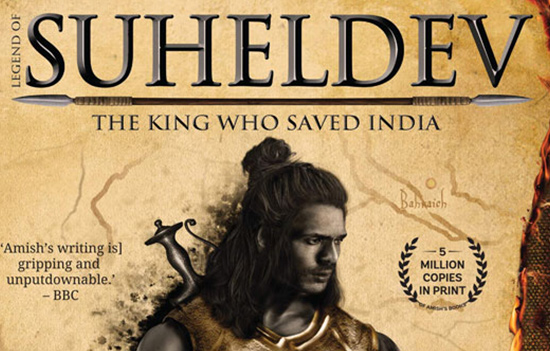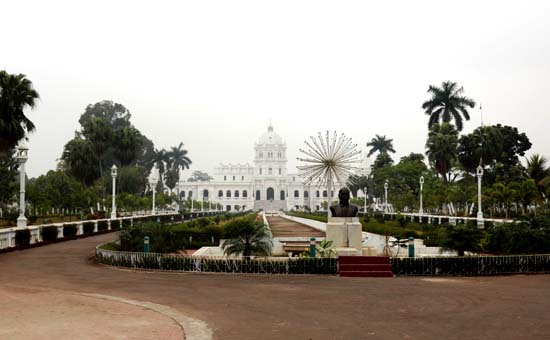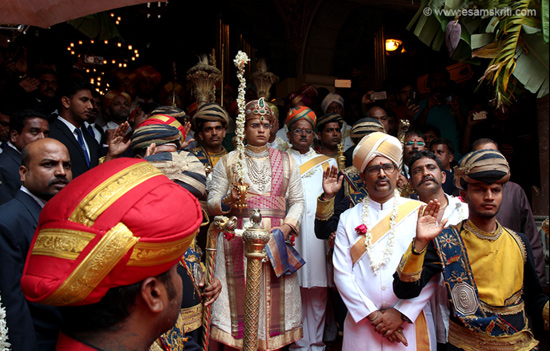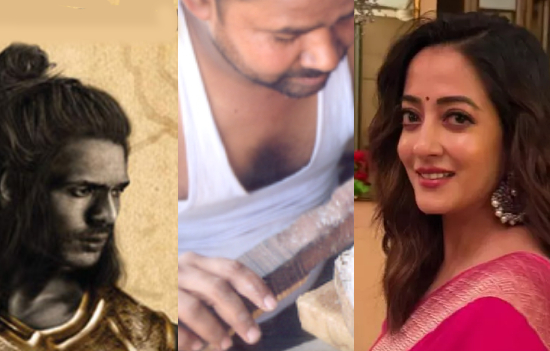- Who
are Other Backward Class (OBC), Brief history of Backward Classes Commission,
review of Central List of OBCs across sample States. List includes SC Converts.
Analysis of Calcutta HC Order that stayed West Bengal government 2011
notification of OBC. Impact of such reservations in brief-does it encourage
conversions?
Earlier
I thought the term OBC referred to other backward caste but thanks to this
essay learnt it is Other Backward Class.
The
matter of reservations for OBC is in the news now days. Many states include the
Muslim community as OBC. In West Bengal, 77 classes were described as OBC
during 2010-12. This was challenged in the Calcutta High Court and order passed
in May 2025, subsequently stayed by the Supreme Court (SC).
This
article covers who is an Other Backward Class (OBC), Brief history of Backward
Classes Commission, review of Central List of OBC across sample states-states
which include SC Converts as OBC, Analysis of Calcutta HC Order that stayed West
Bengal notification of OBC. Do such reservations encourage conversions?
1. But first, who is an OBC?
Section
2 of the 1993 National Commission for Backward Classes (NCBC) Act defines “backward classes” as backward classes of citizens other than the Scheduled Castes and the Scheduled Tribes as may be specified by the Central Government in the lists.” This is a strange definition i.e. based on exclusion of SC and ST. Read OBC
Kings of India
1a. Questions based on definition of who is an OBC?
Does
it include all non-Indians who are not SC/ST and followers of all religions i.e.
mainly Hindus, Muslims, Christians? Does it include SC/ST converts? Is Other Backward
Class related to caste?
A Backward Class is one who is socially and educationally
backward. So can Brahmins, Kshtriyas and Vaishyas be socially and educationally
backward?
2. What is the History of Backward Class Commission?
 Raja Suheldev, descendants of a warrior who saved India from invaders classified as OBC.
Raja Suheldev, descendants of a warrior who saved India from invaders classified as OBC.
Group Editorial Director, India Today
Group Raj
Chengappa wrote in India Today, “The government refused to accept the recommendations of the First Backward Class Commission with Nehru coming out strongly against any move to divide the nation on the basis of caste. Its report was rejected in 1961.
The Second Backward Class Commission formed in
1979 and headed by BP Mandal was again hampered by a lack of figures.
The Mandal Commission bolstered its deductions
with extensive field surveys apart from getting the census department to make extrapolations based on the 1931 census. It recommended a reservation of 27% for OBCs to all government services as well as technical/professional institutions both at the Centre and state levels. It was former Prime Minister VP Singh, who during his tenure in 1990, announced that the government would implement the Mandal Commission recommendations in toto.” Read Caste Census History – Business Standard and Hindustan Times
Read
A
look back at findings of 1931 Census
The
SC held in 1992 that these 27% reservations were subject to the exclusion of
the Creamy Layer and wanted a Commission (National & State levels) to
determine additions to the List of Backward Classes.
“NCBC
was initially constituted by the Central Government
by the National Commission for Backward Classes Act, 1993. The present
Commission (8th) has been accorded Constitutional Status and constituted through “The Constitution (102nd Amendment) Act, 2018”, whereby Article 338B has been inserted, forming a Commission
for the socially and educationally backward classes.”
If you peruse the list of OBC classes below, you will that find
SC Converts to Christianity and Muslim are included under OBC. Was this the
intent of the Mandal Commission and the VP Singh/Narasimha Rao governments?
Volume I of the Mandal Commission Report (Ch XII) Pg 54 Para 12.2 states, “It may be clarified as castes, communities, classes identified in this survey relate to Hindu religion only as the unit of identification is caste. Criteria for identification of non-Hindus given separately.” Pg 56 of the report says for non-Hindus to be treated as OBC, all Untouchables who converted to non-Hindu religion and Occupational communities where their Hindu counterparts are included in OBC list. Read SC
order which said that Untouchability more prevalent in the South than the North
By including 27% reservation in professional institutions for OBC (Hindus, Muslims and Christians) successive governments have reduced the number of seats available in the General Category (called Upper Caste Hindus).
Has this resulted in the flight of students to study overseas esp. USA (many never to return) is for the Government to analyse?
The
Mandal Commission refers to the unit of identification as Caste. But the European
word caste is of Spanish or Portuguese origin and
fails to capture the meaning of the Indian term, jati, which is more properly translated as “community.” Jati in traditional India promoted and preserved
diversity and multiculturalism by allotting every jati a particular space and
role in society so that no jati would be appropriated or dominated by another.
Read Benefits
of the Caste System And How
British made Caste into evil
 If Cholas, makers of some of India’s biggest temples, were born today they would be OBC.
If Cholas, makers of some of India’s biggest temples, were born today they would be OBC.
2a. If Hindus classified by caste, should Muslims
be as Ashraf, Ajlaf, Arzal?
That is according to Ashraf (who trace their origin either to western or central Asia (for
instance Syed, Sheikh, Mughal, Pathan, etc or native upper caste converts like
Rangad or Muslim Rajput, Taga or Tyagi Muslims, Garhe or Gaur Muslims, etc), Ajlaf
(lower caste or backwards), Arzal (Dalit). Source ThePrint
3. Which are the enabling sections of the Indian Constitution?
Article 15
(4) and 16 (4) authorizes the government to make reservations in educational
institutions for making any special provision for the advancement of any socially
and educationally backward classes of citizens. Indian
Express
“Art 15 (4) Nothing in this
article or in clause (2) of article 29 shall prevent the State from making any
special provision for the advancement of any socially and educationally
backward classes of citizens or for the Scheduled Castes and the Scheduled
Tribes. Article 16 Equality of opportunity in matters of public employment.— Art 16 (4) - Nothing in this article shall prevent the State from making any provision for the reservation of appointments or posts in favour of any backward class of citizens which, in the opinion of the State, is not adequately represented in the services under the State.”
Read Different states
have classified OBC differently?
4. Central List of
Other Backward Classes is given state-wise as per NCBC site
In
Central List number of OBC in select states & Muslims considered as OBC
|
State
|
1NoOBC in List
|
2No Muslims
|
½%
|
|
1. Assam
|
28
|
2
|
|
|
2. Bihar
|
136
|
22
|
16
|
|
3. Gujarat
|
104
|
20
|
19
|
|
4. Tamil Nadu
|
181
|
Not
Mentioned
|
|
|
5. West Bengal
|
99
|
37
|
37
|
|
6. Uttar P
|
76
|
2
(needs experts to check
|
|
|
7. Telangana
|
87
|
4
|
|
|
8. Jharkhand
|
134
|
22
|
16
|
Except U.P. all of the above states treat SC converts to
Christianity as OBC.
Select
State wise details as taken from NBCC site, viewed on 26.8.25 12.20 pm.
Assam- Ahom (former
rulers), Manipuri Brahmin and Manipuri Muslim, select Nepali communities, SC converts to Christianity, Tea Garden
Labourers/Tribes and Muslim fisherman amongst others. List has 28 OBC of whom 2
are Muslim.
Bihar- Aghori, Kasai
(Muslim), Kushwaha, Goud, Chik (Muslim), Dafali (Muslim), Teli, Dhobi (Muslim),
Dhunia (Muslim), Dhankar, Bhatiahara (Muslim), Mali, Mudhiari (Muslim), Mukri
(Muslim), Momin (Muslim), Rajbhansi, Kunjra (Muslim), Christian
converts from SC, Christian converts from OBC, Thakurai (Muslim),
Chippi. List has 136 OBC of whom 22 are Muslim.
Gujarat-
Bawri,
Bafan (Muslim), Dafer (Hindu, Muslim), Dhobi, Fakir (Muslim), Gadhai (Muslim),
Gadharai (Muslim), Ghanchi (Muslim) Teli, Khatik, Hingora (Muslim), Jat
(Muslim), Ansari (Muslim), Christian Converts from
SC, Bhil, Makrani (Muslim), Rabari when not ST, Vanzara, Wagher (Hindu
and Muslim), Arab (Muslim), Tamboli. List
has 104 OBC of whom 20 are Muslim.
Tamil Nadu- Boyar, Converts to Christianity from Scheduled
Castes, Dekkani Muslim, Enadi,
Gounder, Gowda, Kaladi, Mukkuvar or Mukayar including converts to Christianity,
Srisayar, Valmiki, Yadava, Christian converts from any Hindu Backward Classes,
Thiyya, Latin Catholic
Christian Vannar (in
Kanniyakumari District). List has 181 OBC of whom none mentioned as Muslim.
West Bengal- Kapali,
Karmakar, Yogi Nath, Jolah(Ansari
Momin), Dhunia, Fakir Sain, Scheduled
Castes converts to Christianity and their progeny, Pahadia Muslim, Hajjam(Muslim), Muslim Dafadar.
Gangot. Notifications of
OBC post 2011 are all Muslim barring a few. List has 99 OBC of whom 37 are Muslim. Of 37,
notifications for declaring 35 as Muslim OBC were issued in 2011.
Uttar Pradesh- Yadav,
Prajapati, Gosain, Gurjar, Giri, Quereshi, Teli Sahu, Teli Malik (Muslim), Kurmi,
Darzi, Fakir, Nayak, Momin, Muslim Kayastha,
Lodhi-Rajput, Sheikh Sarvari, Rai Sikh, Darugar, Atizhbaz, Lohar. List has 76
OBC, of whom 2 stated as Muslim although Momin are Muslims too.
Telangana- Budabukkala,
Pamula, Valmiki Boya, Goud, Scheduled
Castes converts to Christianity and their progeny, Kachi, Vanjara, Patra, Siddula, Muslim
castes/communities i.e. Dudekula, Laddaf, Pinjari or Noorbash, Qureshi (Muslim
Butchers), Mehtar, Faqir, Fakeer. Of 87 OBC in list, 4 are Muslim.
Jharkhand- Aghori, Barai, Bakho
(Muslim), Bhatt (Muslim), Christian Converts from OBC, Christian
converts from SC, Dangi, Gaddi, Dhobi (Muslim), Dhunia (Muslim), Goud,
Kasai (Muslim), Kurmi, Mali, Momin (Muslim), Mukri (Muslim), Shivhari, Teli,
Thakurai (Muslim). Of 134 OBC in list, 22 are Muslim.
Under current laws, Scheduled Tribes who convert to Islam and Christianity continue to be treated as ST for the purposes of reservations and in the case of the Northeast for income-tax exemption. Does this policy need a
review?
 Former Rulers of Tripura, called Scheduled Tribes today. Their palace in Agartala.
Former Rulers of Tripura, called Scheduled Tribes today. Their palace in Agartala.
5. Who decides if a community is OBC?
Section 2 (h) of the 2012 West Bengal Act sates, “"Other Backward Classes" shall mean such classes of citizens as specified in Schedule I, other than Scheduled Castes and Scheduled Tribes, and includes such classes as the State Government may, by notification in the Official Gazette, specify from time to time;”
SC (Hindu SC) and Hindu/Muslim/Christian ST (lacuna in
law) have reservations. How to give
Muslims benefit of reservations without getting into issue concerned with
religion based reservation. Classify the community as Backward Class. The
West Bengal sought to do this, albeit without following process, so such
classification was struck down in May 25 by Calcutta HC.
6. Next Key points made in Calcutta High
Court order
(Ref 1 is HC Order)
1.
Centre and states were to set up a Tribunal for identifying OBC under art
16(4).
2.
Thus, West Bengal Commission for Backward Classes Act 1993 was passed.
3.
Between 1994-1999, 54 Hindu/12 Muslim communities identified as OBC.
4.
A February 2010 report stated 10% reservations for Muslims.
5.
Through memos 42 classes declared Backward of which 41 were Muslim.
6.
It was contended that the said classification was made on the basis of religion
and not a scientific survey.
7.
On 11/5/2012 35 classes declared Backward-OBC of which 34 were Muslim.
8.
Defendants team refers to Sachar Committee report on condition of Muslims.
9. ‘The central list for OBC, as applicable in WB, includes 36 out of 77 classes.’
10.
‘Number of such classes from the Muslim community were recognized as Backward for the purposes of Article 16(4) by the Mandal Commission.’ 1
11. ‘The NCBC found that a substantial number of classes included under State OBC list are convertees from Hindu religion.’ 1
12. ‘Then came the Mandal Commission, which considered social, educational, and economic factors, still with caste
as a key starting point for identification of OBCs. Mandal Commission
recommended 27% reservation for socially & educationally backward classes.
Post protests, a modified order gave preference to
poorer Sections within Socially and Economically Backward Classes.’ 1
13. ‘If it is backward socially, it would be a backward class for the purposes of Article 16(4). Among non-Hindus, there are several occupational groups, sects and denominations, which for historical reasons, are socially backward. They too represent backward social collectivities for the purposes of Article 16(4).’ 1
14. ‘Neither the Constitution nor the law prescribes the procedure or method of
identification of backward classes.’ 1
15. ‘Creamy layer’ can be, and must be excluded.’ 1
16. ‘Sachar Committee was not constituted under Art. 340 of the Constitution which empowers only the President to constitute a Commission for backward classes. Hence, the report of the Committee does not have Constitutional sanction or support.’ 1
17. “The State is barred from declaring who are the Other Backward Classes without consulting the Commission (state level).’ 1
The Court held that the role of the Commission is mandatory under the Act.
18. “Section 5 (a) of the Act of 2012 prescribes reservation of 17% for OBC.’ 1
19. “There is a set of classes who were once Hindus & are stated to have been converted to Islam.” 1 Pg
153 Some of them were SC and enjoying reservation.
20. Pg 158 of the Court Order states parameters for
backwardness and the class must not be adequately represented in the services
of the State.
21. ‘Therefore, the State proceeded on the premise that since Backward Hindu classes and castes are covered by the reservation given to the Schedule Caste, Muslim classes must be compensated under the OBC category. 1 Pg 306
22. The Court stated that people hired under such
reservations would not lose their jobs.
To read order in PDF
(highlighted portions in yellow) click on PDF
 Current titular Maharaja of Mysore is OBC!
Current titular Maharaja of Mysore is OBC!
7. It appears that the "backward" status they are struggling against is some ancient phenomenon.
In reality, however, their cultural and
economic backwardness (as distinct from their ritualistic status on specific
occasions) arose post 1800. What backward caste movements are attempting to
achieve is a reversal of the effects of the British policy, and restoration of
the position, status, and rights of these peoples to those that existed prior
to 1800.
Read Benefits of the Caste System And Were Backward Classes always suppressed in India And Why Caste System is Complex
 Marwari/Business Communities in India dominate Start-Ups & Small business.
Marwari/Business Communities in India dominate Start-Ups & Small business.
 OBC Raja Suheldev, Brahmin Carpenter and Rima Sen father belonged to Tripura Royal Family who are called S.T.
OBC Raja Suheldev, Brahmin Carpenter and Rima Sen father belonged to Tripura Royal Family who are called S.T.
It is over 70 years since the Constitution was
adopted. After decades of reservations
and huge financial allocations are SC/ST still backward? So also it is over 35
years of OBC reservation!
References
1.
Calcutta High Court order
Also read
1.
A look at the
complicated history of caste surveys
2.
Who are Scheduled
Tribes?
3.
Were Backward
Classes always suppressed in India?
4.
History of word
Dalit
5.
Legislative and
judicial contours of SC/ST quota
6. The Truth
behind caste
7. OBC categories and
sub-categories
8. To
download Caste of Mind by Nicolas D
9. Caste Census History – Business Standard and Hindustan
Times
10. How caste census will work – questions answered
11.
Why is caste census required – Times of India
12.
A look at the findings of the 1931 Census Report – Indian Express
13.
How States differ
in enumerating castes
14.
In 1919, the Southborough
Franchise Committee adopted the test of untouchability to define the depressed
class. However, over 100 years ago the degree of untouchability
practiced varied across India. The 2024 Apex Court
order on sub-classification of SC says it was more prevalent in south
India.